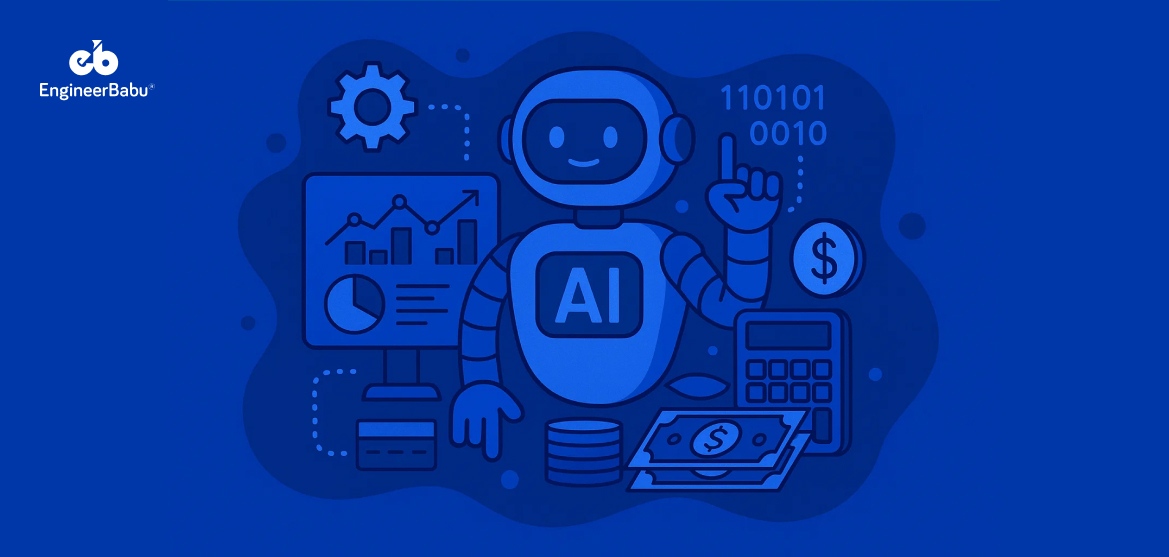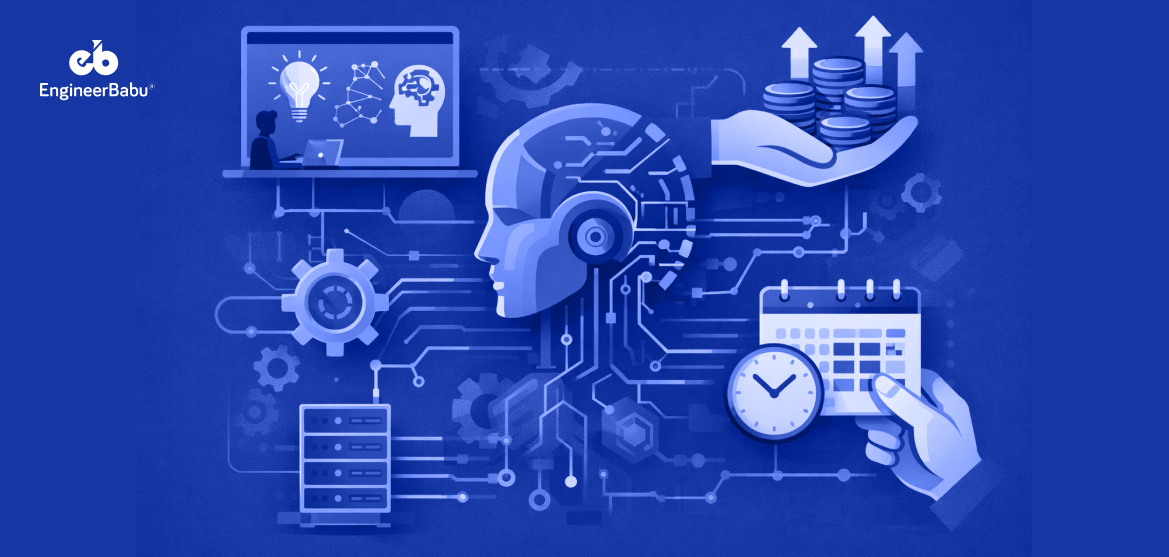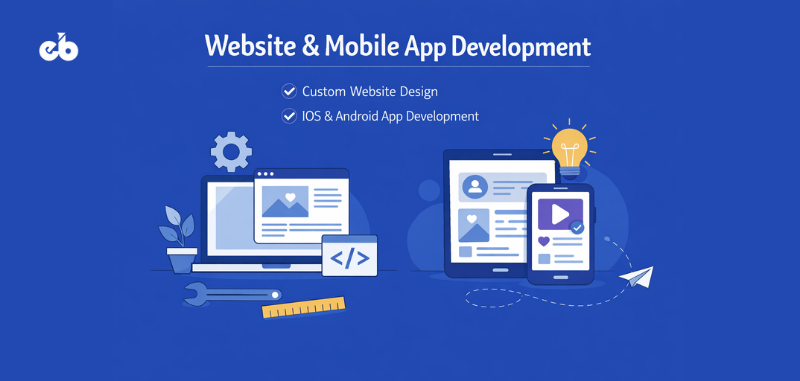Enterprises worldwide are constantly pressured to innovate, scale, and stay competitive. Traditional digital transformation—focused on cloud adoption, process automation, and data migration—is no longer enough to give businesses a competitive edge.
AI has become the core driver of enterprise digital transformation. It is not just an enhancement—it is rewriting how businesses operate, make decisions, and interact with customers.
Why AI is Crucial for Digital Transformation:
- 90% of enterprise leaders believe AI will be essential to their digital transformation efforts.
- Companies leveraging AI see 40% higher operational efficiency than those relying on traditional digital transformation.
- AI adoption in enterprises is growing at a CAGR of 38%, making it one of the fastest-moving business transformations globally.
But AI-driven transformation is not just about deploying machine learning models or adding chatbots. It requires a fundamental shift in how businesses collect, analyze, and act on data.
In this article, we’ll break down:
✔ How AI trends are reshaping enterprise digital transformation.
✔ Key areas where AI delivers the biggest impact (automation, decision-making, customer experience, and innovation).
✔ The challenges businesses face in AI adoption—and how to overcome them.
✔ A structured approach to implementing AI in digital transformation strategies.
The future of digital transformation is AI-first. The question is—how fast can enterprises adapt?
Understanding Digital Transformation & The AI Shift
Digital transformation has been a buzzword for over a decade, with enterprises investing billions in cloud computing, automation, and data-driven decision-making. However, the traditional approach to digital transformation is reaching its limits. It relies heavily on static systems, rule-based automation, and siloed data.
AI is changing the entire game by introducing:
✔ Self-learning algorithms that continuously improve operations.
✔ Predictive intelligence that optimizes decision-making in real-time.
✔ Hyper-automation that goes beyond predefined workflows and adapts dynamically.
Traditional Digital Transformation vs. AI-Driven Transformation
| Traditional Digital Transformation | AI-Driven Digital Transformation |
| Rule-based automation (e.g., RPA) | AI-powered automation that learns & evolves |
| Historical data analysis | Predictive analytics & real-time decision-making |
| Cloud migration & infrastructure scaling | AI-optimized cloud resource allocation |
| Standardized customer experiences | Hyper-personalization using AI & NLP |
| Manual workflow optimizations | AI-driven self-optimizing business processes |
The AI Shift: Why Enterprises Need AI-First Digital Transformation
From Process Automation to Intelligent Automation
- Traditional automation (e.g., RPA) relies on rule-based logic—it can only handle repetitive, structured tasks.
- AI-powered automation goes further by adapting, optimizing, and making decisions without human intervention.
From Static Data Processing to AI-Powered Insights
- Enterprises generate petabytes of data but struggle to extract meaningful insights.
- AI models identify patterns, make predictions, and recommend actions, transforming data into a competitive advantage.
From Reactive to Predictive Business Strategies
- Traditional analytics looks at past trends; AI allows businesses to predict market shifts, detect risks, and optimize performance proactively.
How AI Enhances Digital Transformation
AI is no longer an add-on to digital transformation—it is its foundation. Businesses that integrate AI into their operations see higher efficiency, better decision-making, and a more personalized customer experience.
Let’s explore the key ways AI enhances digital transformation and unlocks new levels of business intelligence and automation.
Process Automation: From Repetitive Tasks to AI-Driven Efficiency
Traditional process automation relied on rule-based workflows, which were capable of handling structured, repetitive tasks but could not adapt to dynamic business environments.
AI takes automation further by enabling self-learning systems that can:
✔ Automate end-to-end workflows across departments (HR, finance, supply chain).
✔ Detect inefficiencies and optimize processes without human intervention.
✔ Scale automatically based on real-time data and business needs.
AI-Driven Decision Making: From Reactive to Predictive Intelligence
Many enterprises still rely on historical data to make decisions—leading to delayed reactions and missed opportunities.
AI enables:
✔ Predictive analytics—identifying patterns in real-time to anticipate market trends.
✔ AI-driven business intelligence dashboards—giving executives instant, data-backed insights.
✔ Automated risk assessment—helping businesses detect fraud, compliance risks, and cybersecurity threats before they occur.
AI-Powered Customer Experience: Hyper-Personalization at Scale
Customers today expect instant, personalized experiences across all touchpoints—something traditional systems cannot deliver at scale.
With AI, businesses can:
✔ Use NLP-powered chatbots to provide 24/7 customer support with human-like interactions.
✔ Analyze customer behavior in real-time and deliver tailored product recommendations.
✔ Detect customer sentiment to address dissatisfaction before it leads to churn proactively.
AI in Innovation & Product Development
AI is also transforming how businesses design, test, and launch new products by:
✔ Automating product development cycles—reducing time-to-market.
✔ Enhancing R&D with AI simulations—predicting product performance.
✔ Using generative AI for content creation, UX/UI design, and creative assets.
Challenges in Integrating AI into Digital Transformation
While AI is revolutionizing enterprise digital transformation, many businesses struggle with implementation due to complexity, skill gaps, and infrastructure limitations.
Let’s break down the biggest challenges enterprises face and how to overcome them strategically.
Data Complexity & AI Readiness
AI thrives on high-quality, structured data—but most enterprises struggle with fragmented, unstructured, or low-quality data.
Challenges:
❌ Siloed data across departments, preventing AI from accessing a unified data source.
❌ Inconsistent or incomplete datasets, leading to inaccurate AI predictions.
❌ Lack of data governance & security concerns, increasing regulatory risks.
How to Overcome It:
✔ Build a centralized data infrastructure with AI-ready architecture.
✔ Implement real-time data processing to ensure AI models have up-to-date information.
✔ Ensure compliance with data privacy laws (GDPR, CCPA) while training AI models.
Lack of AI Expertise & Talent Gaps
AI-driven transformation requires skilled professionals, but enterprises struggle to:
❌ Find and retain AI engineers, data scientists, and ML experts.
❌ Upskill existing employees to work with AI-driven systems.
❌ Bridge the gap between AI research and real-world enterprise applications.
How to Overcome It:
✔ Adopt AI upskilling programs for internal teams.
✔ Leverage AI-as-a-Service (AIaaS) to integrate AI solutions without in-house AI teams.
✔ Partner with AI development firms to build AI capabilities faster.
High Implementation Costs & ROI Concerns
AI adoption requires significant investment in:
❌ Cloud computing & infrastructure upgrades.
❌ AI model development, testing, and fine-tuning.
❌ Integration with legacy enterprise systems.
How to Overcome It:
✔ Start with AI pilot projects before scaling across the enterprise.
✔ Focus on high-ROI AI use cases (automation, customer analytics, risk detection).
✔ Adopt AI-powered cloud platforms to reduce infrastructure costs.
AI Model Bias & Ethical Concerns
AI models can inherit biases from historical data, leading to:
❌ Discriminatory hiring practices in AI-driven recruitment tools.
❌ Bias in financial risk assessment models.
❌ Ethical concerns in AI-powered decision-making.
How to Overcome It:
✔ Ensure diverse, unbiased datasets for AI model training.
✔ Conduct AI ethics audits to monitor fairness in automated decisions.
✔ Regulate AI governance with human oversight.
Strategies for Successful AI Integration in Digital Transformation
Integrating AI into digital transformation isn’t just about deploying models—it requires a structured strategy, infrastructure readiness, and cultural alignment. Many enterprises struggle with AI adoption because they lack a clear roadmap for implementation.
Here’s how businesses can successfully integrate AI to drive scalability, efficiency, and long-term competitive advantage.
Define AI-Driven Business Objectives First
One of enterprises’ biggest mistakes is implementing AI without a clear goal, leading to wasted investments and poor ROI.
How to Do It Right:
✅ Identify pain points AI can solve (cost inefficiencies, slow decision-making, manual processes).
✅ Align AI projects with measurable KPIs (cost reduction, revenue growth, efficiency improvements).
✅ Start with a pilot project before scaling AI across departments.
Invest in AI-ready data Infrastructure
AI models depend on high-quality data—but most enterprises have fragmented, siloed, or unstructured datasets.
Key Steps for AI-Ready Infrastructure:
✅ Centralize enterprise data in cloud-based AI ecosystems.
✅ Use real-time data processing tools (Apache Kafka, Snowflake, Databricks).
✅ Ensure data governance compliance (GDPR, CCPA, ISO 27001).
Leverage AI-as-a-Service for Faster Deployment
Building AI in-house is expensive—but enterprises can accelerate adoption by using AI-as-a-Service (AIaaS).
✔ AIaaS providers (AWS AI, Google AI, OpenAI, IBM Watson) offer:
✅ Pre-trained AI models for automation, NLP, and machine learning.
✅ Faster deployment with minimal infrastructure investment.
✅ Built-in compliance, reducing regulatory risks.
Bridge the AI Talent Gap with Upskilling & Partnerships
AI adoption fails when companies don’t have skilled professionals to build, manage, and optimize AI systems.
✔ How to Overcome the Talent Gap:
✅ Upskill existing teams with AI & ML certifications (Coursera, Udacity, AWS AI training).
✅ Partner with AI development firms to fast-track AI integration.
✅ Hire AI specialists through global AI talent platforms.
Ensure AI Ethics, Security & Compliance from Day One
AI bias, ethical concerns, and data privacy risks can lead to legal liabilities and reputational damage.
✔ Key AI Governance Strategies:
✅ Implement AI fairness & bias audits to prevent discrimination in AI decisions.
✅ Ensure explainable AI (XAI) for transparency in automated decision-making.
✅ Adopt AI security frameworks to prevent cyber risks.
AI is No Longer an Option—It’s a Business Imperative
AI is not just an upgrade to digital transformation—it is the core driver of business reinvention. Enterprises that see AI as a future investment rather than a present necessity are already falling behind.
This shift goes beyond automation. AI is reshaping decision-making, customer experiences, and operational efficiency at scale. Businesses that fail to integrate AI will struggle to compete against faster, more brilliant, AI-first enterprises.
AI is not just an IT initiative but a leadership priority. Companies that embed AI into their strategy will set industry benchmarks, while those that hesitate will risk irrelevance.
The real question is not if your business should adopt AI but how fast you can implement it before competitors outpace you.
Is your business AI-ready?




